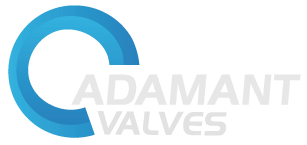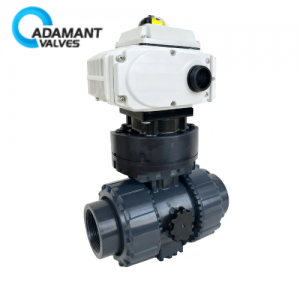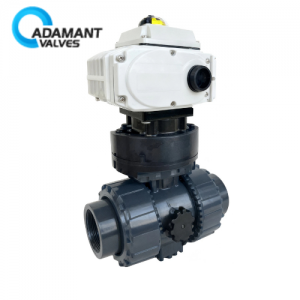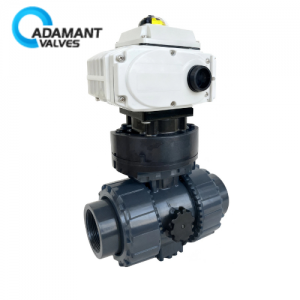FAQ
Valve FAQ
What is the valve?
A valve is a device that regulates the flow of a fluid (gases, fluidized solids, slurries, or liquids) by opening, closing, or partially obstructing various passageways. The majority of valves are used in water reticulation, sewerage, oil and gas, power generation, mining, and chemical manufacturing.
How many types of valves are used to control the flow of fluids?
Valves can be categorized into the following design types, and although there are hundreds of variations, most of valves fit into these basic types:
What types of valves does Adamant Valves primarily manufacture?
We specialize in manufacturing high-precision sanitary valves, pumps, and pipe fittings. Our product line is extensive, including sanitary butterfly valves, sanitary ball valves, sanitary check valves, diaphragm valves, sanitary fittings, and various sanitary pumps.
Among these, sanitary valves come in a wide range of styles, including manual, electric, and pneumatic actuation, as well as two-way, three-way, full-bore, stainless steel, brass, and PVC materials.
What is a sanitary valve?
A sanitary valve is designed for use in applications requiring clean or sterile processing. Sanitary valves are commonly used in dairy, food, pharmaceutical, medical, and chemical applications. Their common features include easy cleaning, crevice free, and polished contact surfaces.
What is a butterfly valve?
A butterfly valve is normally used as a throttling valve to regulate a fluid flowing through a section of pipe. It consists of a circular body and a rotary motion disk closure member which is pivotally supported by its stem.
What is a ball valve?
A ball valve is a valve that opens by turning a handle attached to a ball inside the valve. The ball has a hole, or port, through the middle so that when the port is in line with both ends of the valve, flow will occur. When the valve is closed, the hole is perpendicular to the ends of the valve, and flow is blocked. The handle or lever will be in line with the port position letting you “see” the valve’s position.
What is a check valve?
A check valve is a valve normally allows fluid (liquid or gas) to flow through it in only one direction. Check valves have two openings in the body, one for fluid to enter and the other for fluid to leave. There are various types of check valves used in a wide variety of applications.
How do I select the right valve for my application?
Choosing the appropriate valves requires considering the following key factors:
- Medium: What fluid are you controlling? (e.g., water, oil, gas, chemicals, etc.)
- Pressure and Temperature: What are the operating pressure and temperature range of your system?
- Connection Type: What type of pipeline connection do you have? (e.g., threaded, flanged, etc.)
- Functional Requirements: Do you need a simple on/off valve, or do you require flow control or automation?
If you’re unsure, our expert team is always available to provide free selection support! Please share your specific operating parameters, and we will recommend the most suitable valve for you: Contact Us
How to install a valve?
Whenever you are going to install a valve, be sure you know the function the valve is going to perform – that is, whether it must start flow, stop flow, regulate flow, regulate pressure, or prevent backflow. Inspect the valve body for the information that is stamped upon it by the manufacturer: type of system (oil, water, and gas), operating pressure, direction of flow, and other information.
How to maintain a sanitary valve?
Regularly inspect valves for external leaks or operational difficulties.
For valves requiring frequent operation, it is recommended to lubricate the valve stem and actuator periodically based on usage.
If leakage occurs, it is often due to worn seals, which should be replaced.
What are pipe fittings?
Pipe fittings are used in pipe systems to connect straight pipe or tubing sections, to adapt to different sizes or shapes, and to regulate fluid flow, for example.
What are the advantages of Adamant Valves?
- We use high-quality raw materials, such as 304/316 stainless steel, titanium alloy, and strictly adhere to high-standard manufacturing processes to ensure valve durability and reliability.
- Every batch of valves has undergone rigorous pressure testing and leak detection.
- We provide comprehensive professional services, from technical consultation and selection to after-sales support.
Can Adamant Valves provide customized solutions?
Absolutely! The standard products cannot meet all needs. So we can customize valve materials, dimensions, connection types, actuators, and brand markings according to your specific requirements. Contact our sales team to discuss your customization needs.
Are your valves suitable for corrosive chemicals?
This depends on the specific type and concentration of the chemical. We offer a variety of valve body and seal materials to accommodate different media. For example, 316 stainless steel valves with PTFE seals are suitable for various acidic and alkaline environments. Please provide the specific chemical names, and our technical team will confirm material compatibility for you.
What is the minimum order quantity? Do you offer sample testing?
We provide sample services for most standard products, allowing you to test quality and performance. As for the minimum order quantity, we remain flexible and can negotiate based on the specific product, striving to meet the needs of clients of all scales.
What quality certifications do you offer?
Adamant Valves has been audited and certified to fully comply with ISO 9001, CE, FDA, and TUV requirements, covering all aspects of design, manufacturing, inspection, customer service, and distribution.
Where can I check your product prices?
If you need a specific quotation, please use the “Contact Us” form on our website or email our sales department directly. Let us know the product models and quantities you’re interested in, and we will provide you with a detailed quotation as soon as possible.
What is a 3-A compliant equipment? How to tell if a product is certified?
All the sanitary products carried by Adamant Valves are not 3-A compliant unless the certifications are provided with the specific products for which the 3-A Symbol was granted with the name of the license holder.
icon
1 949 407 8897
icon
You could check a current certification and license here.




